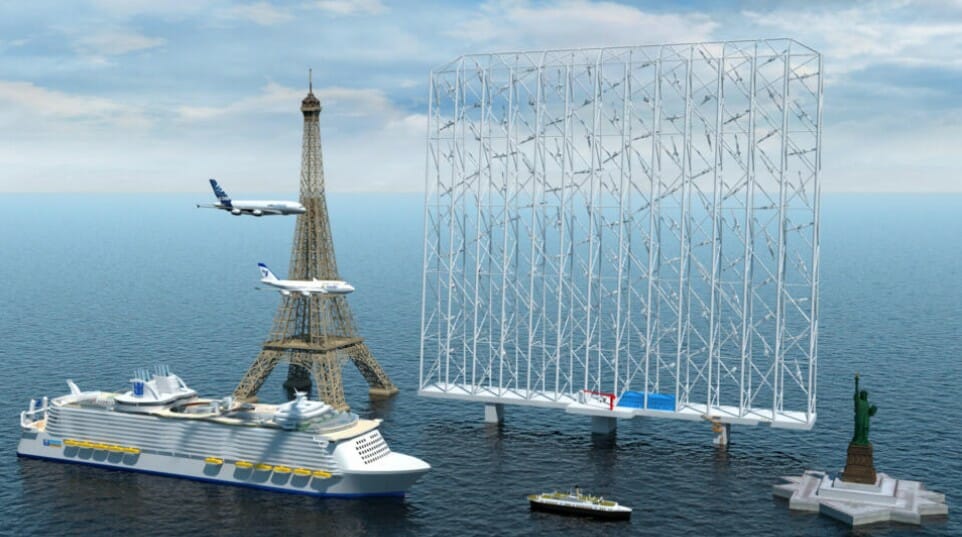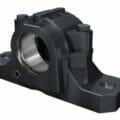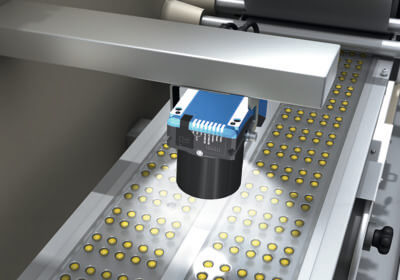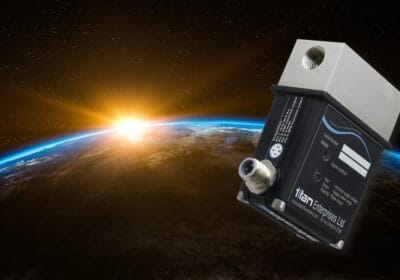The Norwegian company Wind Catching Systems is literally putting up a wall against the trend of ever-larger rotors on wind turbines – a “wall” as tall as the Eiffel Tower with 126 small 1-MW turbines intended to supply enough offshore electric power for 80,000 households.

The hunger for cheap green electricity is huge. By private households as well as by industry. A single gigantic chemical or steel plant requires almost as much electricity as an entire offshore wind farm can supply. However, suitable areas in shallow coastal waters, such as the North and Baltic Seas, on which such wind farms can be planted are rare in our oceans. But this is not the only reason why it makes sense to place wind farms far out to sea, as the Norwegians are planning with their vertical wind farm. It also makes sense because the wind blows more strongly out there – and the electricity yield is correspondingly greater.
According to Wind Catching Systems, the 324-meter-high turbine wall offers more advantages:
- Land use is 80 percent less than for conventional offshore farms
- The turbines can be produced onshore and, like an oil rig, can be towed to the site upon completion
- A large quantity of smaller rotors can be produced and maintained more cheaply than a giant turbine. A hoist-based turbine installation system further simplifies maintenance, eliminating the need for special vessels or cranes
- Small rotors undergo less wear than large ones. The manufacturer claims a service life of 50 years; conventional large wind turbines are designed to last 20 to 30 years
- The small rotors can also be used in extremely strong wind conditions and do not require complex folding mechanisms
- Overall 80 percent higher efficiency than conventional offshore turbines

All this should enable offshore wind operators to produce electricity at a price that can compete with other energy sources without subsidies, promises company CEO Ole Heggheim. Wind Catching Systems’ main owners are two large Norwegian companies: Ferd AS and North Energy ASA. The floating power source will be built by Aibel AS, a construction company for oil and gas production facilities and wind farms, also based in Norway. Among other things, Aibel has built the world’s largest offshore wind farm, the Dogger Bank Offshore Wind Farm in the British North Sea. This financial and technical background suggests that the thoroughly ambitious goal of having a plant in operation by 2024 at the latest could be achievable.
Same wind. More power.

Rotor bearings in wind turbines are subjected to strong one-sided loads, because the wind always comes from the front. This is ensured by the automatic alignment of the rotor blades of the wind turbines. This is good for the energy yield, but also leads to one-sided axial loads on the bearings. In addition, the rotor shaft only moves very slowly and at variable speeds. In addition to the one-sided load, this also leads to insufficient lubrication and ultimately to high surface wear on the gear side of the main bearing. The asymmetrical arrangement of the two rows of rolling elements compensates for the typically strong one-sided forces effecting wind turbines. Asymmetrical spherical roller bearings, which Schaeffler has developed in response to the challenges facing the entire wind energy sector, thus offer decisive advantages over conventional symmetrical spherical roller bearings. Read more at schaeffler.com








